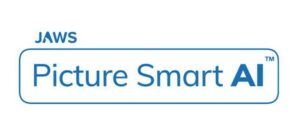Empowering Inclusion: Championing Vision Accessibility in the Workplace

At New England Low Vision and Blindness, we understand that fostering an inclusive environment means more than just opening doors to employment; it’s about creating a space where individuals with vision impairment can thrive. Empowerment in the workplace begins with accessibility—ensuring that all team members have the tools and resources they need to perform their roles effectively. Vision accessibility is a critical aspect of this empowerment, enabling people who are visually impaired to contribute meaningfully to their teams and the success of the organization.
During March Awareness Month, we focus on Workplace Eye Wellness, advocating for practices and technologies that support those with visual challenges. As the leading assistive technology provider and trainer for the visually impaired, we bring hope and tangible solutions, offering leading-edge resources that transform the workplace into a setting where vision accessibility is not just an afterthought, but a forethought.
Our commitment extends beyond providing assistance; it’s about promoting an understanding of vision accessibility. By advocating for inclusive policies and environments, our aim is to set a standard for workplace inclusion, demonstrating the value and potential that employees with vision impairments add to the fabric of a company. We believe that through education and the right accommodations, businesses can unlock the full potential of their diverse workforce, empowering every individual to excel.
Understanding Vision Accessibility
Vision accessibility is critical to empowering individuals with vision loss or blindness in the workplace. It involves creating an inclusive environment that supports the full participation of these individuals through accommodations and technologies.
Defining Vision Accessibility
Vision accessibility refers to the practices and modifications that allow individuals with visual impairments to access the same resources and perform the same tasks as their sighted counterparts. It encompasses a range of strategies from physical adjustments in the workspace to the use of leading-edge assistive technologies that enhance access to digital content.
Legal Framework and ADA
The Americans with Disabilities Act (ADA) is a federal law that prohibits discrimination against individuals with disabilities in all areas of public life. Under the ADA, employers are required to provide reasonable accommodations for employees with disabilities, including those with vision loss, to ensure they have equal employment opportunities. This includes modifications to the workplace environment and access to assistive technology that enable employees to perform their job functions.
Impact of Vision Loss on Employment
The impact of vision loss on employment can be profound, as it may limit an individual’s ability to perform certain tasks without proper accommodation. Our goal is to ensure that visually impaired employees are equipped with the necessary tools and technologies, like screen readers and magnification software, to be effective in their roles. By promoting and implementing vision accessibility standards, we can help bridge the employment gap for those with vision loss and foster an inclusive workforce.
Inclusive Work Culture
It’s crucial for us to share how a culture of inclusivity is not only a moral imperative but also a strategic advantage. Leveraging diverse perspectives leads to more innovative solutions and increased employee satisfaction.
Creating an Inclusive Environment
To create a genuinely inclusive environment, we actively design workspaces that address the needs of our colleagues with visual impairments. This goes beyond compliance with accessibility standards; it involves thoughtful consideration of features from tactile floor plans to leading-edge assistive technologies that foster independence and empowerment. Inclusivity must be infused into the very fabric of our workplace culture, ensuring that every employee has the resources and support they need to thrive.
Accessibility Features:
- Tactile way-finding solutions
- Adjustable lighting systems
- Screen reader-friendly software and websites
The Role of Leadership
Leadership is pivotal in driving an inclusive culture. We champion this by embarking on regular training for leaders to recognize the impact of visual impairments at work, steering the organization towards inclusivity through policies and practices that reflect equity and empathy. It is our belief that effective leadership is demonstrated through actions that strongly advocate for a diverse and supportive environment—one in which every employee is valued.
Leadership Actions for Inclusivity:
- Ensure equitable opportunities for all employees
- Create open channels for feedback and dialogue
- Regular inclusivity training focused on vision accessibility
Addressing Unconscious Bias
All of us harbor unconscious biases that can unknowingly shape our interactions and decisions. Tackling these biases head-on is essential to foster an inclusive workplace where diversity is celebrated, and all employees feel respected. We provide continuous training programs to address and mitigate unconscious biases, transforming our workplace attitudes and behaviors to be more inclusive and accepting of all colleagues.
Unconscious Bias Mitigation:
- Regular bias awareness workshops
- Encouraging diverse hiring panels
- Promoting open discussions on inclusivity challenges
By embracing diversity and fostering an inclusive work culture, we demonstrate our commitment to creating an environment where every individual’s unique experiences and abilities are treasured, making our organization stronger and more resilient.
Advancements in Assistive Technology
Companies need to focus on empowering individuals with vision impairments through leading-edge assistive technology. Here, we discuss modern tools, integration strategies at work, and the innovation that promises a future of enhanced access and independence.
Modern Assistive Technologies
Advancements in assistive technology have been transformative for those with visual impairments. Microsoft, for example, has developed solutions like the Seeing AI app, which uses artificial intelligence to describe the environment, read text aloud, and identify products. This type of innovation is integral to providing independence to people with sight challenges. Devices like screen readers, text-to-speech software, and braille displays have evolved, becoming more intuitive and user-friendly.
Integrating Technology at Work
Our work in integrating technology in the workplace is about creating inclusive environments where everyone has the tools they need to succeed. Assistive technology, such as magnification devices and accessible computing systems, allow individuals with vision impairments to perform their job functions effectively. Developers have a crucial role in this integration process, ensuring software and digital platforms are accessible by design, aligning with standards such as the Web Content Accessibility Guidelines (WCAG).
Future of Assistive Innovation
The future of assistive technology is being shaped by relentless innovation in fields like artificial intelligence and machine learning. As a leading provider, we’re excited about the potential of AI to further tailor assistive solutions to individual needs, enabling seamless work experiences. Embracing new technologies and continuously training on their use is key to unlocking the abilities and potential of professionals with vision challenges.
Implementing Accommodations
It’s important to discuss how implementing accommodations can create an inclusive environment for those with vision disabilities. Our approach ensures that employees have the support and resources they need to succeed professionally.
Identifying Employee Needs
Understanding the specific needs of employees with vision disabilities is the first step towards inclusion. Listening is key; we engage with individuals to assess their unique challenges and determine the best accommodations. This personalized strategy helps us provide targeted resources and support, aligning with the goal to empower our employees to perform at their best.
Accommodation Strategies
We are dedicated to providing leading-edge assistive technology solutions to enhance workplace productivity for people with visual impairments. From adaptive software to magnification devices, our range of services offers practical solutions. We Bring Hope by enabling our employees to thrive in their work environment through the following strategies:
- Assistive Technology: Implementing screen readers, magnification software, and braille displays.
- Workplace Adjustments: Customizing lighting and providing ergonomic furniture to reduce eye strain.
- Training and Support: Offering comprehensive training on assistive technologies to employees and their teams.
Measuring Accommodation Success
We measure the success of our accommodations with a clear set of criteria:
- Employee Feedback: Soliciting regular feedback to ensure accommodations address their needs effectively.
- Productivity Tracking: Observing if there is an uptick in productivity post-accommodation implementation.
- Continuous Improvement: Making adjustments to accommodations based on feedback and success metrics.
By adopting a holistic approach, we ensure accommodations are not only supportive but also a driver for continuous workplace improvement.
Promoting Accessibility and Inclusion
Creating an inclusive workplace involves ensuring that everyone has the tools and resources they need to perform to their best abilities. This includes providing leading-edge technology and training for individuals with vision impairment to thrive in a professional environment.
Accessibility in Digital Spaces
It’s crucial to create digital workspaces that are accessible to all team members. We advocate for following the Web Content Accessibility Guidelines (WCAG) to ensure that work websites and digital tools are navigable and usable for people with visual impairments. This can include screen reader compatibility, keyboard navigation, and customizable visual options.
Education and Training Initiatives
Our commitment to inclusion extends to ongoing education for both our staff and external organizations. We offer training sessions that are tailored to empower employees with the skills needed for maximizing the use of assistive technologies. Elevating awareness and capabilities are central to fostering an environment that values every individual’s contributions.
Building External Partnerships
Building partnerships with like-minded organizations enhances our ability to support workplace eye wellness. We believe in collaborating with industry leaders and advocacy groups to drive initiatives that promote digital inclusion and accessibility in the workplace. These synergies are fundamental in pushing the envelope for creating expansive opportunities for individuals with visual impairments.



